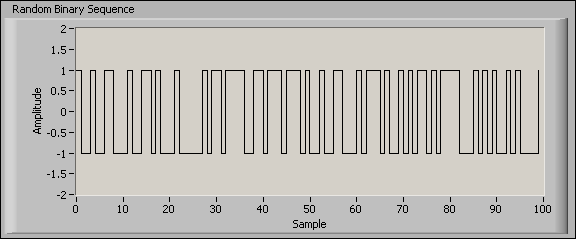Random Binary Signal (System Identification Toolkit)
A random binary signal is a random process that can assume one of two possible values at any time. A simple method of generating a random binary signal is to take Gaussian white noise, filter it for the desired spectra and then convert it to a binary signal by taking the sign of the filtered signal. The desired spectra is a function of the system time constraints. The appropriate scaling must provide a meaningful response to the system, well above the noise level.
You can scale the signal to any desired amplitude. The resulting signal has a minimum crest factor C f of 1. You can expect some differences in the resulting spectra. Therefore, you must perform offline analysis of the signal.
Binary signals are useful for identifying linear systems. However, the dual-level signal does not allow for validation against nonlinearities. If a system is nonlinear, you can use an input interval corresponding to the desired operating point. You might need to work with more than two input levels in these cases. You can combine multiple binary signals of different levels to form the stimulus signal.
The following figure shows an example of a random binary signal.
